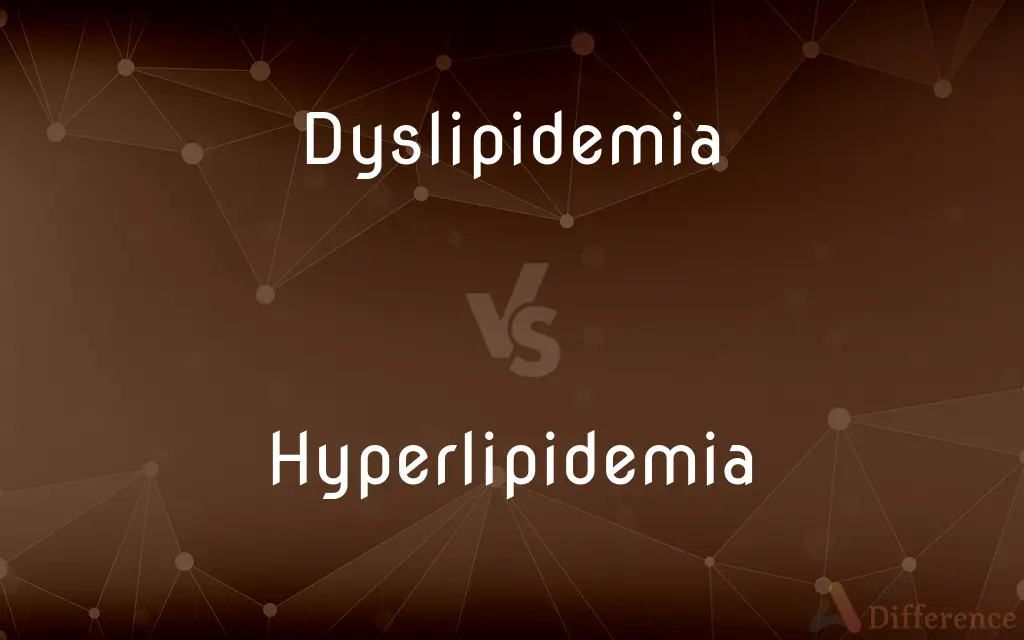Dyslipidemia vs. Hyperlipidemia — What's the Difference?

Difference Between Dyslipidemia and Hyperlipidemia
ADVERTISEMENT
Compare with Definitions
Dyslipidemia
Dyslipidemia is an abnormal amount of lipids (e.g. triglycerides, cholesterol and/or fat phospholipids) in the blood.
Hyperlipidemia
Hyperlipidemia is abnormally elevated levels of any or all lipids (fats, cholesterol, or triglycerides) or lipoproteins in the blood. The term hyperlipidemia refers to the laboratory finding itself and is also used as an umbrella term covering any of various acquired or genetic disorders that result in that finding.
Dyslipidemia
An abnormal concentration of lipids or lipoproteins in the blood.
Hyperlipidemia
An excess of fats or lipids in the blood. Also called hyperlipemia.
Dyslipidemia
(medicine) an imbalance of lipids (especially cholesterol) in the blood; hypercholesterolemia
ADVERTISEMENT
Hyperlipidemia
(medicine) An excess quantity of lipid in the blood; a symptom of several medical conditions.
Hyperlipidemia
Presence of excess lipids in the blood
Share Your Discovery

Previous Comparison
Suit vs. Case
Next Comparison
Erica vs. Heather














































